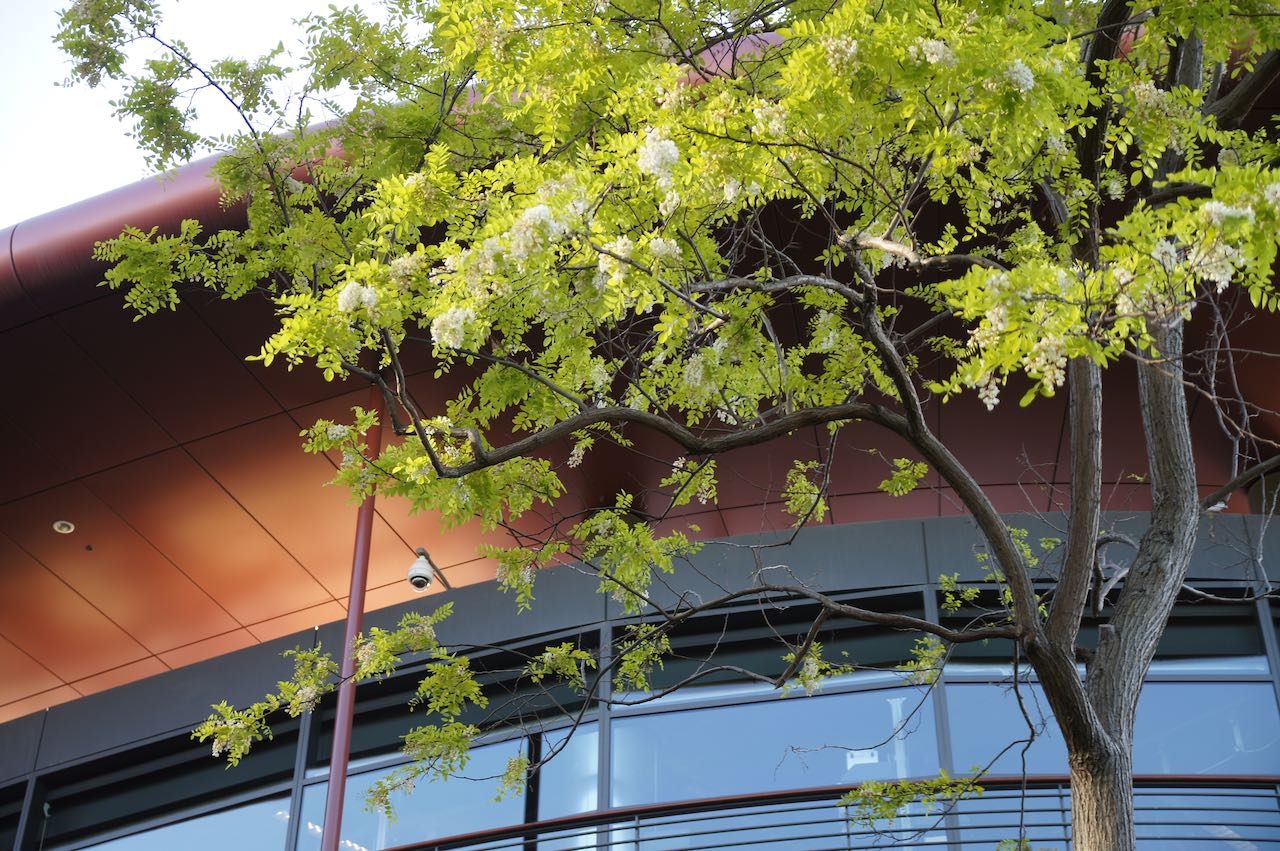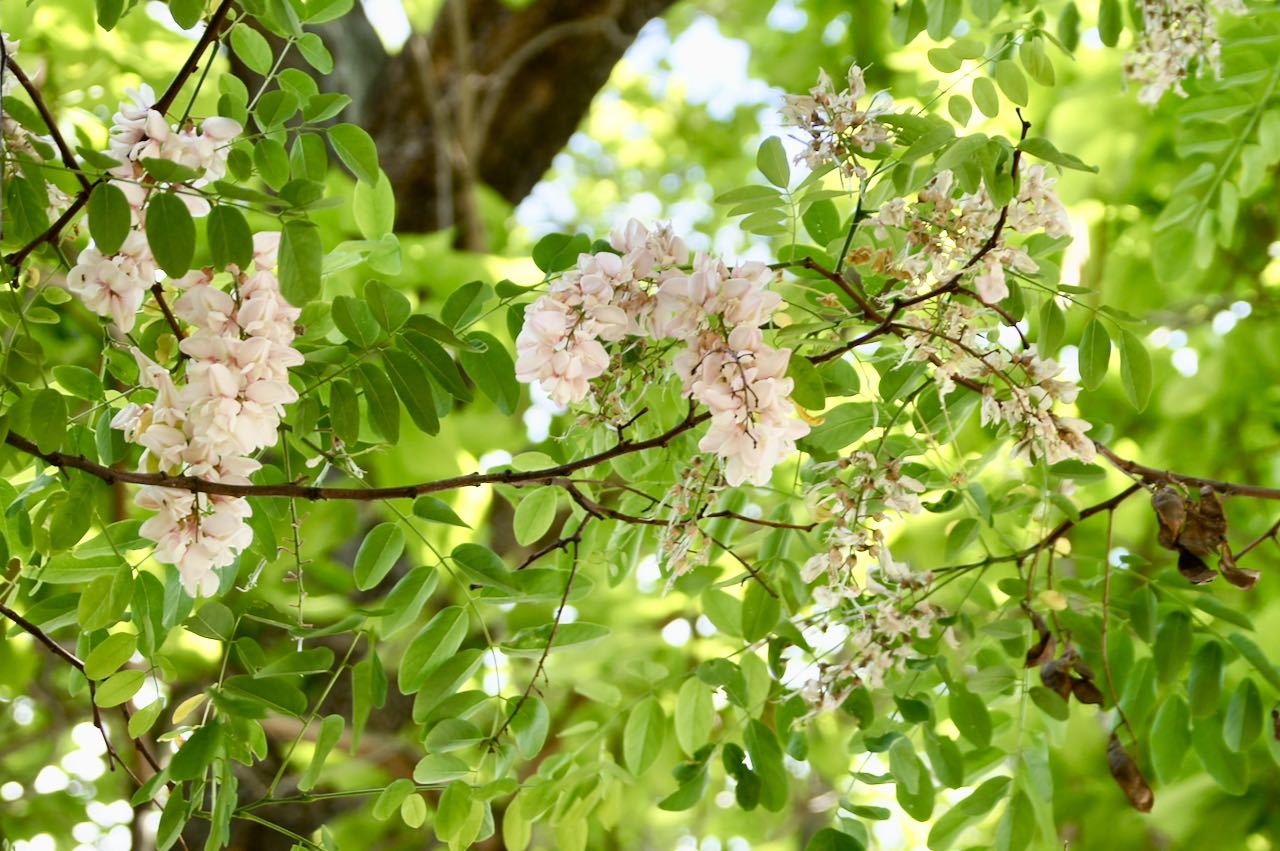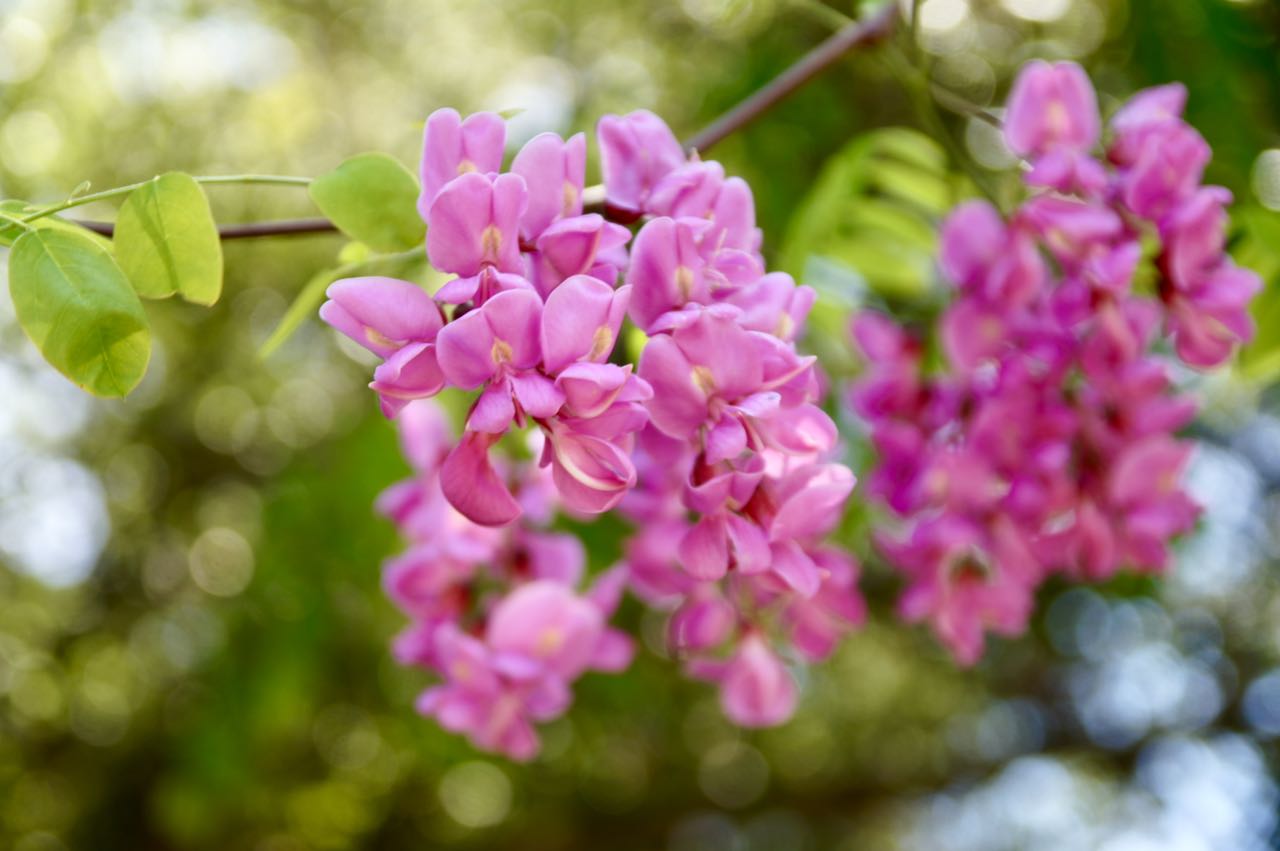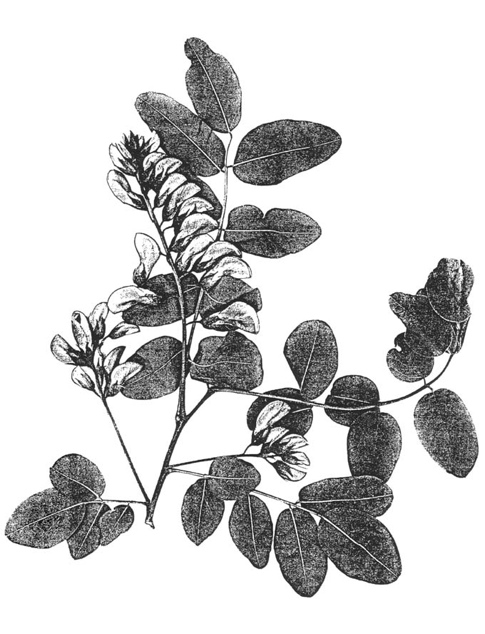Robinia pseudoacacia
 black locust
black locust

A largish tree of very pleasant appearance in April when it is clothed in new light green leaves and strings of white, faintly fragrant pea flowers. The compound leaves have about 13 thin oval leaflets, each 1 to 2 inches long, and at the base of the leaf stalk wicked spines about ½ inch long are found on older trees. More recently the spineless variety ‘Inermis’ has been favored. Last season’s thin brown pods, which are about 3 inches long, contain a few flat brown seeds.
The wood was used in the United States where hardness and durability were wanted; for example, in the United States Native Americans used it for bows. Introduced into France in 1601 by botanist Jean Robin, the tree became well known in Europe. In France it is used as an ornamental, has been extensively planted for firewood, and the flower clusters are dipped in batter and deep fried. It is naturalized over much of Italy under the name Acacia (pronounced a-HAH-shah in Tuscany) and the flowers are eaten by children for the nectar. Native Americans ate the flowers and cooked the pods and seeds.
Look for a large one on Memorial Way near the honey locust and carob trees. Another, on Mayfield Avenue at Pearce Mitchell Place, seems to have produced seedlings across the road, which are armed and flowering at 5 feet tall. More than a dozen full sized trees have sprung up around the moist drainage area at the Frenchman’s Road entrance to the Dish. An attractive specimen is at 1281 Stanford Avenue in Palo Alto; others are nearby. Variety ‘Frisia’ has reddish orange new twig growth in spring with cheerful yellow leaves through the summer. Two tall specimens at the north end of Clark Center on campus are all that remain of the forest of two dozen that was planted in the inner courtyard and outside.
Pink hybrids
Ornamental crosses of R. pseudoacacia with pink flowering species of Robinia abound on campus.

Nine older specimens on either side of Mayfield Ave just north of Campus Drive are R. × ambigua ‘Decaisneana’, a pale pink cultivar of the cross between R. pseudoacacia and R. viscosa, the clammy locust. The gumminess of its young twigs are a legacy of the latter parent. Another Robinia with pale pink flowers on slope west of the stage at Frost Amphitheater was lost. (Some black locusts remain behind the upper tiers, on the east side.)
A formal planting of 46 R. × ambigua ‘Idahoensis’ with bright pink flowers brackets the east end of the Science and Engineering Quad. This area used to be called Stone Pine Plaza for the brief period between 1999 and 2008, and boasted 60 similarly sited locusts. ‘Idahoensis’ also used to be be seen in the area around Mirada Avenue and Frenchman’s Road.

Purple Robe™, reported to be a cross between ‘Decaisneana’ and R. hispida ‘Monument’, mostly replaced ‘Idahoensis’ in the nursery trade and probably accounts for the more recently planted deep pink flowered specimens on campus. It bears no seedpods, and petals shrivel to a beautiful pale violet. Several young specimens are on Mayfield Avenue opposite Lasuen (572); other similar ones may be seen along Mayfield Avenue all the way to Alvarado Court. More Purple Robe locusts are on the North-South Mall around Keck Science Building.
Seventeen deep pink flowered Robinia of uncertain provenance march down the protected crosswalk that bisects the Tresidder parking lot.
About this Entry: The main text of this entry is from the book Trees of Stanford and Environs, by Ronald Bracewell, published 2005. Tresidder and Lasuen locations added, all locations verified (except for Frost), cultivar details added May 2020 by Sairus Patel (ref. Arthur Lee Jacobson). Mayfield Avenue and seedling note added; Stanford Avenue and Dish location added (Apr 2024, SP). Frost locations updated (Dec 2024, SP).




